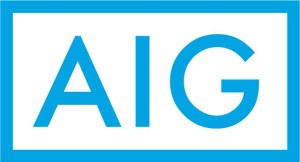 AIG has made good progress toward achieving its strategic goals of creating “a leaner, more focused, highly profitable commercial insurance organization,” according to Robert S. Schimek, executive vice president & chief executive officer of Commercial.
AIG has made good progress toward achieving its strategic goals of creating “a leaner, more focused, highly profitable commercial insurance organization,” according to Robert S. Schimek, executive vice president & chief executive officer of Commercial.
Schimek discussed the company’s ongoing strategic actions in the areas of portfolio exits, client focus, risk selection, strategic use of reinsurance, and innovation for growth.
Speaking at a recent investor day, which was held for analysts, Schimek said the company has made great progress across all five of these areas. “In particular, the portfolio exits and the reinsurance, I think we’ve … done about what we need to do.”
But AIG will never be done with the other three areas: client focus, risk selection and innovation, he emphasized. “It’s part of the ongoing fiber of what it takes to run a successful commercial insurance operation.”
He pointed to improvements in the combined ratio as a demonstration of progress that has been and will be made over the coming year.
Schimek projects that AIG will have improved its combined ratio by 12 points from 100 percent at the end of 2012 to 88 percent by the fourth quarter of 2017. He said it takes a combination of two things to make this happen: controlling expenses and improving the loss ratio – both of which have been accomplished.
“If you don’t control your expenses, reducing your volume will simply increase your loss ratio. You’ve got to do both.”
In the first nine months of 2016, AIG’s loss ratio has improved by six points from where it was at the end of 2012 – from 70 percent in 2012 to the current 64 percent.
“You can also see that we’ve worked really hard on the efficiency because the expense ratio has also improved … by two points during that same time period [or 30 to 28 percent],” Schimek explained.
Improving Business Mix
He indicated that AIG is working to improve its mix of business – growing or maintaining certain products or improving or remediating others.
For example, in the “improve and remediate” part of its portfolio, AIG reduced its net premiums written by 33 percent in the first nine months of 2016 – from $7.7 billion for the first nine months of 2015, or a $2.6 billion decrease in NPW in this part of the portfolio.
On the other hand, in the company’s “grow and maintain” portfolio, the NPW have dropped by just 3 percent from $8.2 billion reported during the first nine months of 2015, compared with $7.9 billion during the first nine months of 2016.
Schimek then drilled down into the areas where it is growing as well as the areas where it is shrinking.
AIG is growing in parts of its financial lines, such as mergers & acquisitions and cyber. It also is growing in the international space within primary casualty, he noted.
Within property, it is growing in highly engineered property risks “where we’re able to use the AIG capabilities to help clients reduce the likelihood of a loss in the first place…,” he said.
AIG also is growing in the area of large limit property lines, according to his PowerPoint presentation at the investor day conference.
In the special risks segment, Schimek said, “we continue to see growth opportunities in credit lines.”
On the other hand, AIG is reducing the amount of capital and the amount of business in some other areas such as excess and surplus lines property. “I’d love for market conditions to be better and to be able to grow there; we have a leadership position there, but we can’t achieve an attractive rate of return … in today’s market conditions, and so it’s shrinking.”
AIG is also shrink its US excess casualty business, its environmental business and certain special risks such as program and aerospace business.
He said that AIG loves aerospace and “we’re very capable in it, but it’s highly competitive…” He said the company will “hold our space but we’re not going to deploy a significant amount capital if we can’t get an appropriate return.”
In other areas, AIG will maintain its market share and be opportunistic when necessary, he indicated. “If we see good plays in good parts of the market or in specific products, we’ll take advantage of it, but otherwise, for the most part, we’re going to be opportunistic.”
According to his PowerPoint presentation, these areas include:
- Liability lines such as primary casualty US and excess casualty international
- Financial lines such as commercial management liability, financial institution management liability, financial institution professional indemnity and commercial professional indemnity
- Marine





















 AI-Powered Insurance Product Development Is Going to Take Some Powering Through
AI-Powered Insurance Product Development Is Going to Take Some Powering Through  Despite Break in Car Prices, Soaring Insurance Costs Hit U.S. Buyers
Despite Break in Car Prices, Soaring Insurance Costs Hit U.S. Buyers  Allstate’s Safe Driving App Helps Reduce Chance of Collision by 25%
Allstate’s Safe Driving App Helps Reduce Chance of Collision by 25%  If U.S. Inflation Reflected Rising Home Insurance Costs, It’d Be Even Higher
If U.S. Inflation Reflected Rising Home Insurance Costs, It’d Be Even Higher 



